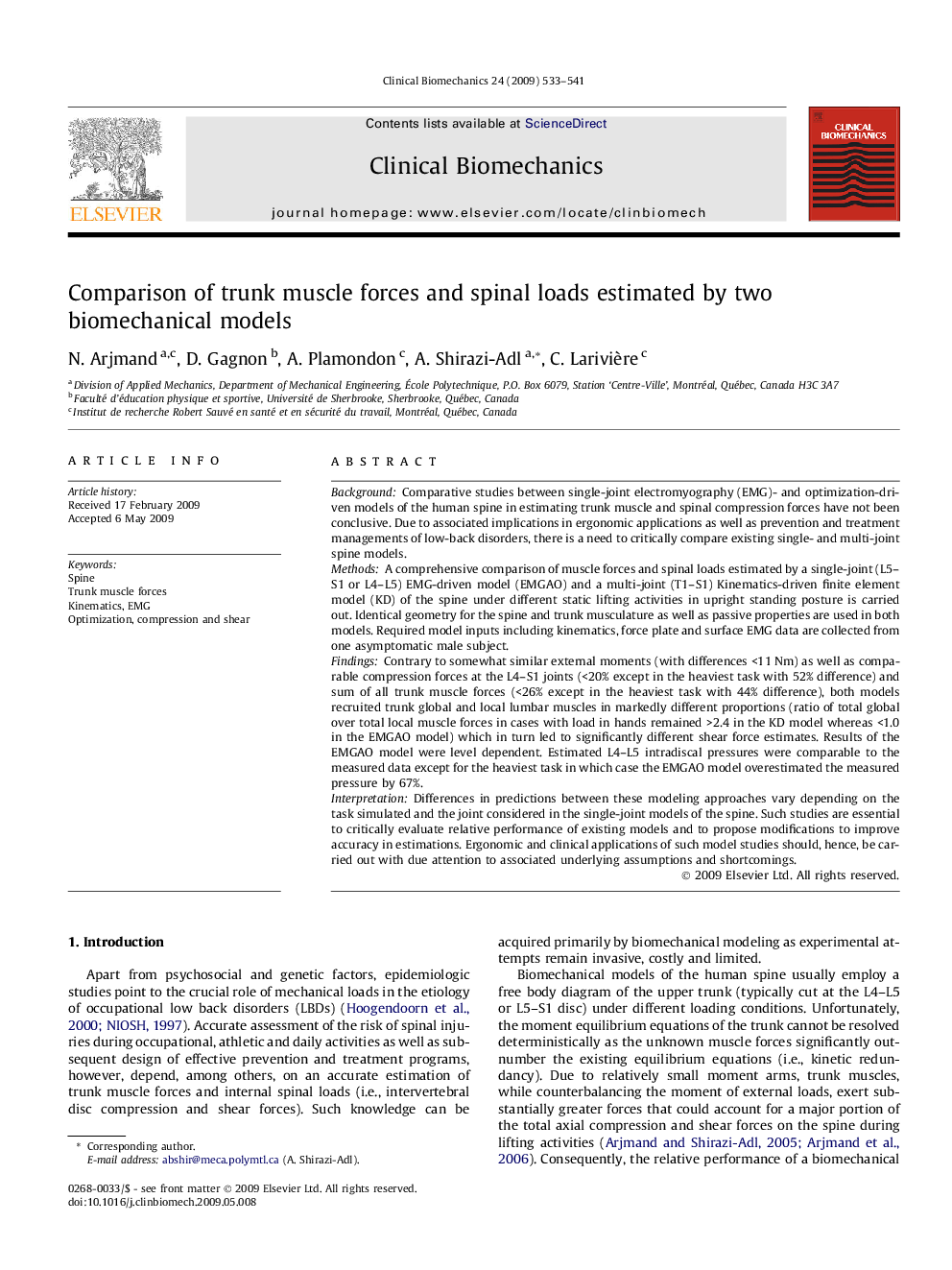| کد مقاله | کد نشریه | سال انتشار | مقاله انگلیسی | نسخه تمام متن |
|---|---|---|---|---|
| 4051095 | 1264974 | 2009 | 9 صفحه PDF | دانلود رایگان |

BackgroundComparative studies between single-joint electromyography (EMG)- and optimization-driven models of the human spine in estimating trunk muscle and spinal compression forces have not been conclusive. Due to associated implications in ergonomic applications as well as prevention and treatment managements of low-back disorders, there is a need to critically compare existing single- and multi-joint spine models.MethodsA comprehensive comparison of muscle forces and spinal loads estimated by a single-joint (L5–S1 or L4–L5) EMG-driven model (EMGAO) and a multi-joint (T1–S1) Kinematics-driven finite element model (KD) of the spine under different static lifting activities in upright standing posture is carried out. Identical geometry for the spine and trunk musculature as well as passive properties are used in both models. Required model inputs including kinematics, force plate and surface EMG data are collected from one asymptomatic male subject.FindingsContrary to somewhat similar external moments (with differences <11 Nm) as well as comparable compression forces at the L4–S1 joints (<20% except in the heaviest task with 52% difference) and sum of all trunk muscle forces (<26% except in the heaviest task with 44% difference), both models recruited trunk global and local lumbar muscles in markedly different proportions (ratio of total global over total local muscle forces in cases with load in hands remained >2.4 in the KD model whereas <1.0 in the EMGAO model) which in turn led to significantly different shear force estimates. Results of the EMGAO model were level dependent. Estimated L4–L5 intradiscal pressures were comparable to the measured data except for the heaviest task in which case the EMGAO model overestimated the measured pressure by 67%.InterpretationDifferences in predictions between these modeling approaches vary depending on the task simulated and the joint considered in the single-joint models of the spine. Such studies are essential to critically evaluate relative performance of existing models and to propose modifications to improve accuracy in estimations. Ergonomic and clinical applications of such model studies should, hence, be carried out with due attention to associated underlying assumptions and shortcomings.
Journal: Clinical Biomechanics - Volume 24, Issue 7, August 2009, Pages 533–541